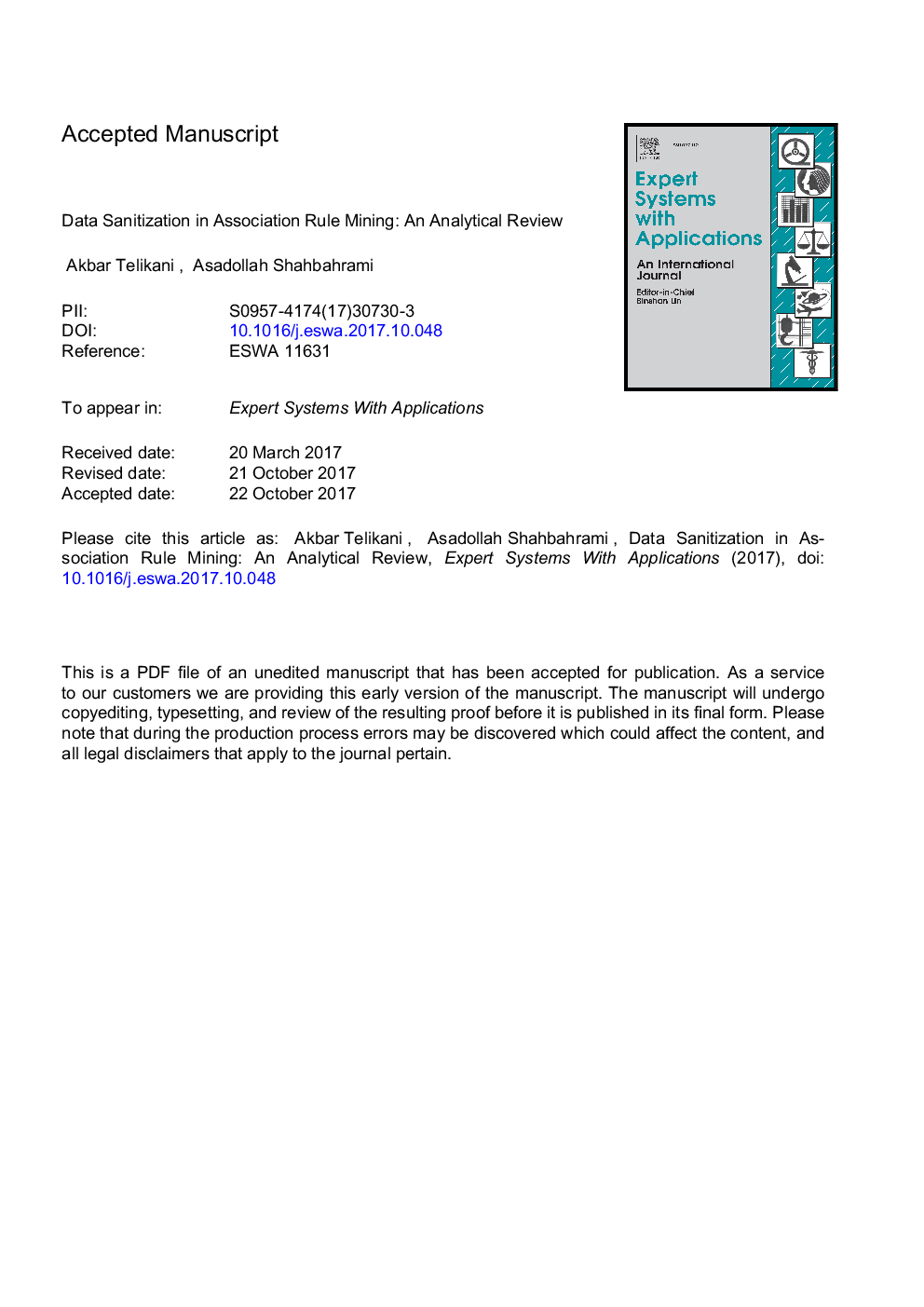| Article ID | Journal | Published Year | Pages | File Type |
|---|---|---|---|---|
| 6855268 | Expert Systems with Applications | 2018 | 37 Pages |
Abstract
Association rule hiding is the process of transforming a transaction database into a sanitized version to protect sensitive knowledge and patterns. The challenge is to minimize the side effects on the sanitized database. Many different sanitization algorithms have been proposed to reach this purpose. This article presents a structured analysis and categorization of the existing challenges and directions for state-of-the-art sanitization algorithms, with highlighting about their characteristics. Fifty-four scientific algorithms, primarily spanning the period 2001-2017, were analyzed and investigated in terms of four aspects including hiding strategy, sanitization technique, sanitization approach, and selection method. In terms of results and findings, this review showed that (i) in comparison to other aspects of sanitization algorithms, the transaction and item selection methods more significantly influence the optimality of hiding process, (ii) blocking technique increases the disclosure risk while distortion technique is better in knowledge protection field, and transaction deletion/insertion technique is a new direction, (iii) heuristic-based algorithms have attracted more attention than other algorithms, especially in the context of hiding the association rules, (iv) a new trend is to use evolutionary paradigm for knowledge hiding that is often integrated with the transaction deletion/insertion technique, and (V) hiding the association rules introduces more challenges than hiding the frequent itemsets in terms of the determination of strategy and formulation of the selection method. This study aims to help researchers and database administrators find recent developments in association rule hiding.
Keywords
Related Topics
Physical Sciences and Engineering
Computer Science
Artificial Intelligence
Authors
Akbar Telikani, Asadollah Shahbahrami,
